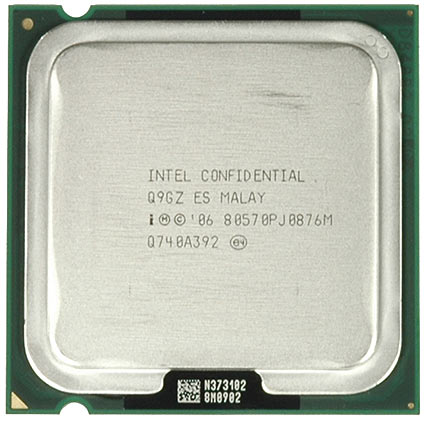Overclocking Intel's Wolfdale E8000
Conclusion: Overclockers Wait! Everyone Else Go For It
Core 2 Duo Wolfdale remains an excellent new CPU that provides substantial performance while reaching new records in efficiency Compare Prices on Core 2 Duo Processors. We drove the processor all the way up to 4.3 GHz, which has been the limit for the test sample. Since this is only the beginning of the 45 nm generation, we expect future models and future steppings to deliver even better overclocking margins. We're also not sure whether it was the CPU core or the system bus that created the bottleneck that prevented higher clock speeds from being reached, as 4+ GHz can oftentimes be reached with the predecessor, Core 2 Duo E6000 Conroe. However, the 45 nm Wolfdale was optimized for performance per Watt instead of clock speed, and it clearly beats the 65 nm Conroe in all efficiency benchmarks and delivers better performance at decreased power consumption both in idle and under maximum load.
We found it amazing to see the dual-core Wolfdale beat the quad-core Yorkfield when it comes to SYSmark performance per watt. Clearly, combining two Wolfdale dies inside a physical processor, which is how Intel creates a quad-core processor, does provide much better performance (as you could also see in the overclocking charts), but the power consumption increases more than the level of performance. Even better thread optimization might help, but the results underscore the previous conclusion: Core 2 Duo E8000 is the most reasonable processor choice unless you really need much more performance. Please look at the CPU Charts for performance comparisons between the new Core 2 Duo Wolfdale processors and a long list of AMD and Intel CPUs.
Join our discussion on this article!
Get Tom's Hardware's best news and in-depth reviews, straight to your inbox.
Current page: Conclusion: Overclockers Wait! Everyone Else Go For It
Prev Page Performance Per Watt Normalized To 3.0 GHz And Pentium 4 630
Patrick Schmid was the editor-in-chief for Tom's Hardware from 2005 to 2006. He wrote numerous articles on a wide range of hardware topics, including storage, CPUs, and system builds.
-
LLJones What? Seriously? No one was reading Tom's back at this time or what?Reply
Good article as I am revamping and older system and want to know how the Wolfdale OC'd. Thanx for the info.
